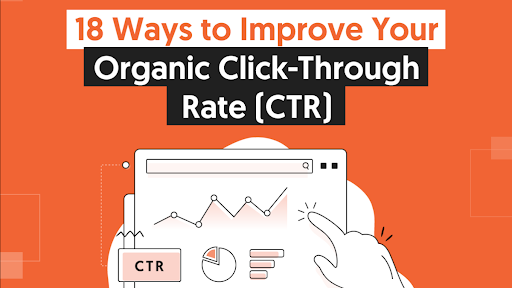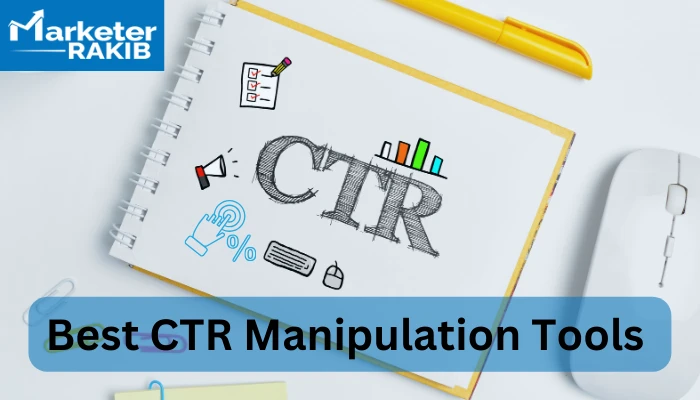How to Measure the Effect of CTR Manipulation on Your Advertising
Recognizing the subtleties of click-through price (CTR) manipulation in marketing is vital for organizations striving for genuine user engagement. By analyzing crucial metrics such as conversion prices and bounce rates, marketing professionals can uncover potential discrepancies that might develop from fabricated improvements.
Recognizing CTR Adjustment
Comprehending CTR control is important for marketing experts looking for to optimize their campaigns and make certain information integrity. Click-through rate (CTR) describes the ratio of customers that click on a certain web link to the total variety of customers who watch the advertisement or content. Adjustment of this metric can occur with numerous methods, including making use of deceptive advertising and marketing strategies, click farms, or automated crawlers. These methods can unnaturally pump up CTR numbers, resulting in misdirected advertising strategies and misallocation of resources.
The implications of CTR manipulation extend past mere data distortion; they can weaken rely on digital advertising. When organizations depend on inflated metrics, they might purchase ineffective campaigns, eventually hurting their roi. In addition, systems may punish advertisers taking part in such practices, resulting in further ramifications for their marketing initiatives.
To properly battle CTR manipulation, online marketers must develop an extensive understanding of their data resources and analytics tools. By employing sophisticated monitoring methods and looking at website traffic sources, they can guarantee and determine uneven patterns that their efficiency metrics reflect genuine user engagement - LinkDaddy CTR Manipulation. This watchfulness is important for promoting long-term success in an increasingly competitive digital landscape
Secret Metrics to Analyze
Efficient evaluation of key metrics is vital for evaluating truth performance of marketing projects and detecting prospective CTR control. One key statistics to think about is the Click-Through Price (CTR) itself, which represents the ratio of customers that click on an advertisement to the total number of customers who view it. An abrupt spike in CTR may indicate adjustment, necessitating more examination.
Furthermore, keeping an eye on conversion prices is essential. A high CTR with a reduced conversion price might indicate that the clicks are not real or that the targeting is misaligned (CTR Manipulation Service). Examining bounce rates can give insight into customer engagement; a high bounce rate after a click might recommend that the web traffic is not quality-driven.

Tools for Measurement

Furthermore, A/B testing tools such as Optimizely or VWO can promote experimentation with numerous ad versions to establish which elements drive greater CTR. my blog These tools enable online marketers to analyze real-time performance and make data-driven adjustments. Social media site analytics tools, like Hootsuite or Sprout Social, can also contribute in understanding CTR within social systems, giving understandings right into target market behavior and involvement patterns.
Moreover, heat mapping devices, such as Hotjar, can expose exactly how individuals communicate with ads, assisting to identify where enhancements can be made. Combining these devices creates a durable measurement framework, enabling marketing experts to determine the results of CTR adjustment properly. Eventually, the ideal choice of dimension tools is essential for making notified advertising and marketing choices and enhancing project efficiency.

Reviewing Long-term Results
One have to take into consideration the long-lasting impacts of CTR manipulation on overall advertising and marketing performance, as temporary gains can frequently mask deeper effects. In time, artificially blew up click-through prices might bring about lessened trust fund from customers and online search engine alike. When individuals repeatedly run into deceitful methods, they might end up being reluctant to involve with the brand, leading to reduced conversion rates in the future.
Additionally, formula updates from platforms such as Google are created to focus on genuine engagement over filled with air metrics. Consequently, businesses that depend on CTR manipulation may discover themselves penalized, leading to a decrease in natural reach and visibility. This can have a cascading impact on brand name reliability and consumer loyalty, eventually undermining the really goals that the preliminary manipulation sought to achieve.
Additionally, the data gathered from controlled CTR might deceive online marketers in their method growth. Depending on manipulated data can result in view it now illinformed campaigns that stop working to reverberate with the target audience, bring about squandered sources and missed out on possibilities. It is vital for marketing professionals to examine the long-term implications of CTR manipulation and focus on sustainable, ethical engagement techniques for lasting success.
Ethical Factors To Consider in CTR Manipulation
In the world of digital marketing, honest factors to consider bordering CTR manipulation are vital. While the need to enhance click-through prices (CTR) can bring about short-term gains, the prospective lasting consequences on brand name honesty and customer trust can not be overlooked. Adjusting CTR usually includes methods that may deceive customers, such as clickbait headlines or deceitful advertising practices. These approaches can lead to a transient boost in website traffic yet may inevitably erode consumer confidence.
In addition, honest issues expand to conformity with laws such as the Federal Trade Payment (FTC) standards, which mandate openness in advertising. Stopping working to comply with these criteria can expose businesses to lawful ramifications and damage their online reputation. Marketing professionals must take into consideration the effects of their techniques on individual experience and the more comprehensive market landscape.
Furthermore, the surge of man-made intelligence and automation in advertising and marketing offers more moral issues. The potential for algorithmic bias or the exploitation of consumer information raises questions regarding accountability like it and fairness. Eventually, ethical advertising and marketing methods ought to focus on transparency, honesty, and respect for the consumer, cultivating long-term relationships that go beyond simple metrics like CTR. Stabilizing performance with ethics is necessary for lasting success in the digital industry.
Conclusion
In final thought, measuring the effect of CTR control on marketing calls for a comprehensive analysis of key metrics, including click-through rates, conversion prices, and bounce rates. Eventually, a data-driven strategy guarantees that marketing approaches are efficient and straightened with genuine individual interactions.
Recognizing the nuances of click-through price (CTR) adjustment in advertising and marketing is crucial for organizations striving for genuine customer interaction.Effective analysis of crucial metrics is essential for reviewing the real performance of marketing campaigns and detecting possible CTR adjustment.One need to take into consideration the lasting impacts of CTR manipulation on total advertising and marketing efficiency, as short-term gains can typically mask much deeper ramifications.In the world of electronic marketing, ethical considerations surrounding CTR adjustment are extremely important.In conclusion, measuring the influence of CTR control on advertising and marketing requires an extensive analysis of essential metrics, including click-through prices, conversion rates, and bounce rates.